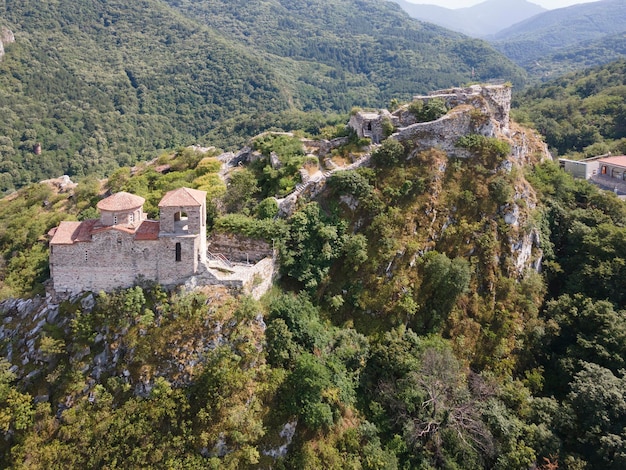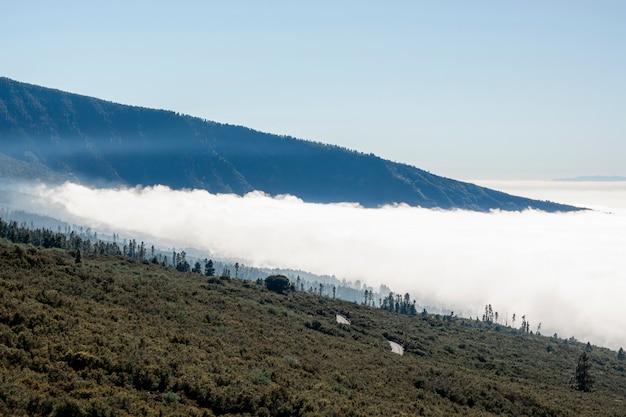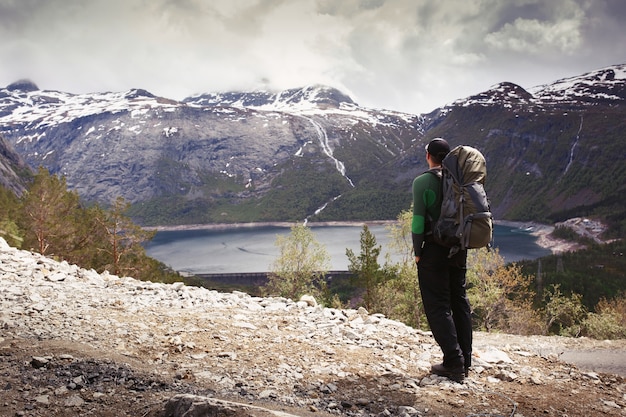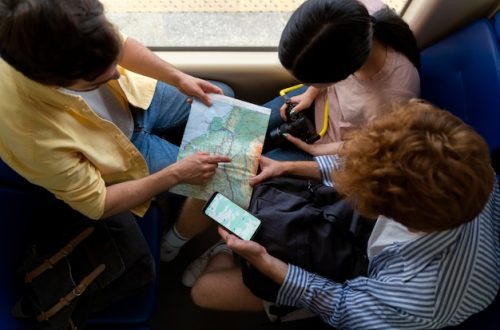
In the distance, we saw the old town perched on a cliff. Our taxi driver navigated around the edge of the town, trying different streets but often hitting dead-ends or one-way roads. He frequently checked the city map, mumbling in Bulgarian, searching for a way through the ancient walls.
Eventually, we decided to walk instead of continuing to drive. Feeling bad about not getting us there, the taxi driver didn’t charge us the full fare, though we gave him some money for his efforts. This kind gesture foreshadowed the warmth we’d experience over the next five nights in Plovdiv.
We trekked up steep cobblestone streets, which wasn’t too bad since we had no luggage—the airline had lost it. Whether it was stuck in Puerto Rico, our stopover in New York, or in Istanbul, we didn’t know. We were just glad to have our day packs.
The narrow lanes twisted and turned in every direction, their high walls blocking our view. A local man noticed our confusion and kindly walked us to our hostel. From the outside, Hostel Old Plovdiv looked magnificent with its yellow facade, ornate wooden columns, and beautiful decorations.
Inside the 150-year-old home, we were impressed by the high ceilings and wooden floors. A welcome sign greeted us, a personal touch we’d never seen in all our years of backpacking.
Despite being termed a hostel, it felt more like a boutique hotel, which we loved, and the prices were very reasonable (10 Euros per person per night, including a huge breakfast).
The house, originally owned by a wealthy tobacco farmer, is somewhat of a museum. While many similar homes are now shops or restaurants, Hostel Old Plovdiv offers a glimpse into 1800s life. The elegant ceilings and antique furniture were charming, but the Roman-period stone wall in the basement truly impressed us!
Old towns have always fascinated us, and Plovdiv was no different. Close to the hostel, we explored museums, churches, art galleries, Roman ruins, and the Rahat Tepe tavern, which we frequented often! A short walk took us to the main pedestrian street, a feature all cities should have. Knyaz Aleksandar I is Europe’s longest pedestrian street, stretching 1.7 kilometers—a perfect spot for shopping, people-watching, enjoying coffee, and seeing the partially excavated 240-meter-long Roman stadium.
As Canadians, seeing such ancient ruins in the hostel basement and throughout the city was incredible. Canada’s oldest structures date back to the early 1600s, and the country itself was founded in 1867!
We joined a free walking tour with other backpackers, which gave us a good orientation of the city. We loved the Bulgarian revival architecture, the up-and-coming neighborhood “The Trap,” and the Roman amphitheater still used for performances.
The surrounding countryside boasts 40 wineries specializing in local grape varieties unique to Bulgaria. We visited during a chilly January, but it was still beautiful—I can only imagine the vineyards in spring and summer. The Thracians, known for their winemaking, are said to have brought the first vines to Europe, planting them in what is now southern Bulgaria.
Our first winery, Starata Izba Parvenets, featured a stunning 19th-century estate covered in vines. We sampled wine straight from Bulgarian oak barrels in a 130-year-old cellar—a “pinch-me” travel moment. Our second stop, the modern Villa Yustina, had a beautiful property, cute goats, and a variety of wines grown, aged, and bottled on-site.
We enjoyed the wine and the food pairings, especially the platter of cheese, meats, bread, and blueberry jam. After several tastings (more like full glasses), it was a welcome treat. Each winery offered a unique experience.
Plovdiv had everything we look for in a destination: rich history, great food, beautiful scenery, fascinating architecture, and friendly people. We even befriended Vasil and Zina, the owners of Bulgaria Wine Tours, who took us on a pub crawl!
Everyone we met was genuinely welcoming, treating us not as tourists but as friends. We were even interviewed by a journalist in one of the pubs!
The restaurants were fantastic, and we loved the local Bulgarian food (Nick especially liked duck heart!). The pubs offered great entertainment, and thanks to our friend Jazza, we found some awesome live music in a bar’s basement.
The city’s history was mind-blowing, our accommodation superb, and the overall atmosphere very relaxed (“aylak” in Plovdiv slang). We’d love to return in the spring. It’s no surprise Plovdiv was named the European Capital of Culture for 2019.
Traveling in Plovdiv was also very affordable. Meals in restaurants ranged from $3 to $5, local beers were around $1, and 0.5L of wine cost $2.50. Taxis were cheap and used meters, and live music cover charges were just $1.
There was something about Plovdiv that made us want to stay longer. Though it was our first stop on an Eastern Europe backpacking trip, we instantly wanted to settle in! However, we needed to move on and explore more. Stay tuned for our upcoming adventures in this part of the world.
Have you heard of Plovdiv before? Does it sound like a place you’d like to visit? Let us know below, we’d love to hear from you!
Thanks to Hostel Old Plovdiv and Bulgaria Wine Tours for hosting us during our stay. Despite any complimentary services received, all thoughts and opinions are our own.



